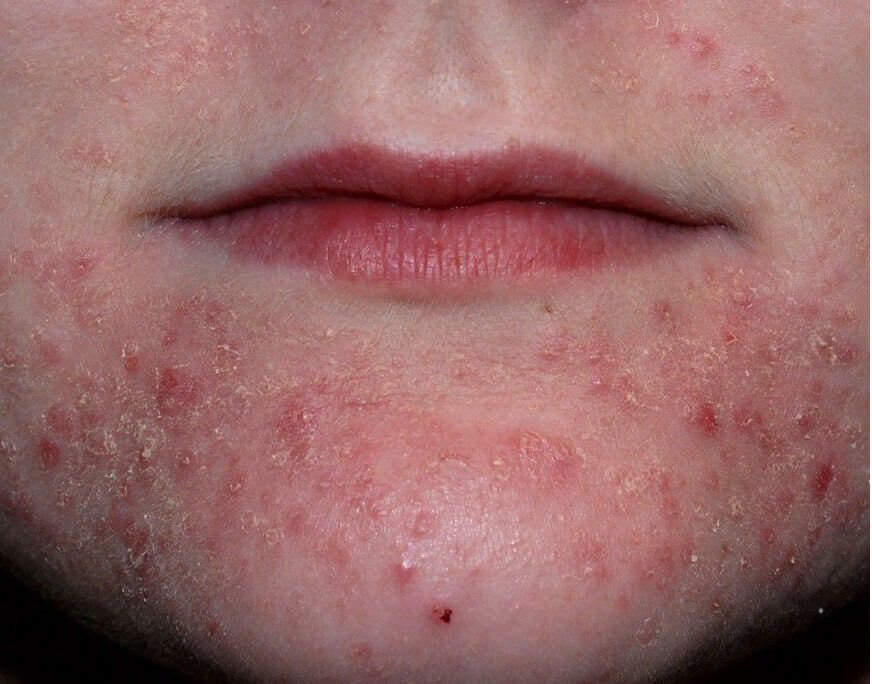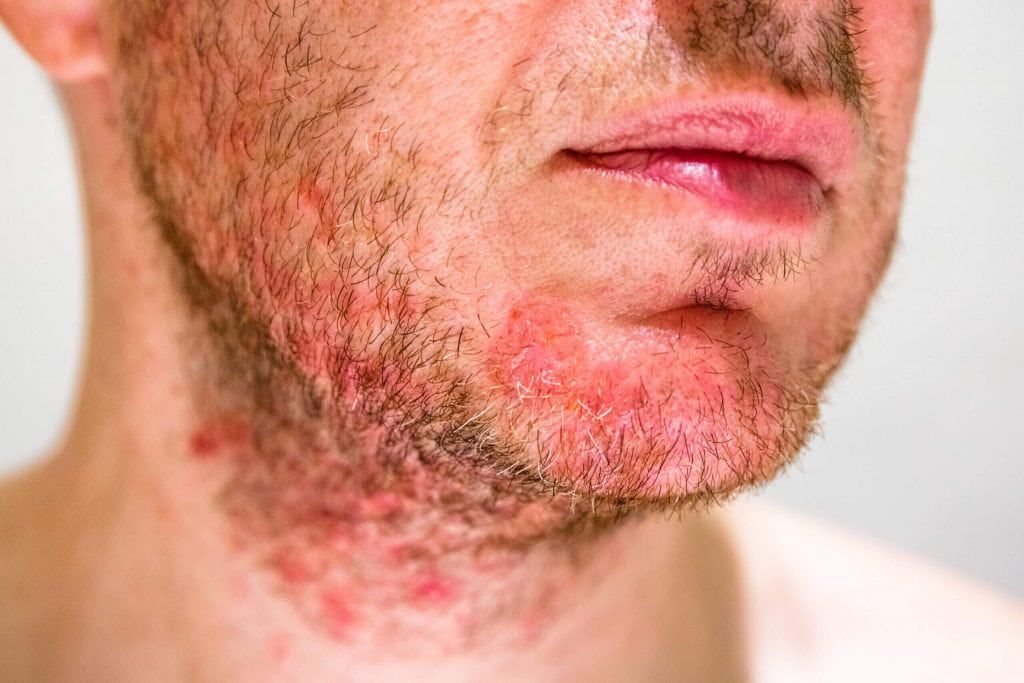Winkelwagen
U heeft geen artikelen in uw winkelwagen
Acne vulgaris presents as inflammatory papules, pustules, cysts, and comedones primarily on the face, but may also affect the chest and back. Patients may have flares of acne secondary to mechanical mechanisms, such as from a helmet chin strap. The distribution of involvement may mimic perioral dermatitis. Adult female acne is characterized by inflammatory papules of the chin and jawline and can have a similar distribution as perioral dermatitis.
Seborrheic dermatitis presents as ill-defined erythematous patches with greasy scale distributed on the eyebrows, glabella, paranasal skin, nasolabial folds, beard, scalp, and chest.
Demodex folliculitis presents with scattered erythematous facial papules and pustules. Demodex mites have been implicated in the pathogenesis of rosacea. Unroofing of the pustules followed by microscopy of the purulent material shows numerous Demodex.
Tinea faciei presents with erythematous scaling papules and annular plaques and can be ruled out by performing a KOH prep and microscopic examination of the scale.
Syringomas and other cutaneous adnexal neoplasms also can mimic perioral dermatitis as these lesions are flesh-colored to erythematous facial papules. A biopsy is helpful for diagnosis.
Lip-licking dermatitis is very similar to peri-oral dermatitis but tends not to spare any skin next to the lips so spreads out directly from the lips. It is more common in children, particularly those who habitually lick their lips. The mainstay of treatment is to avoid licking the lips and using bland lip balms such as Vaseline® to cover the skin. However, topical steroids can be used in lip-licking dermatitis and do have some benefit at times.
James Heilman, MD, CC BY-SA 4.0, via Wikimedia Commons
Continue reading below

Periorální dermatitida je označení pro chronické onemocnění kůže na obličeji, které má velmi často vracející se charakter. Přes neobvyklý název je však jeho výskyt poměrně častý. Jaké jsou příčiny vzniku tohoto onemocnění? Koho nejčastěji postihuje? Jaké metody léčby existují? Všechny důležité aspekty jsme rozebrali v našem článku.
Periorální dermatitida (Dermatitis Rosaceiformis) je chronické onemocnění kůže, které postihuje především mladé ženy.
Poprvé toto onemocnění bylo zpozorováno asi před 30 lety u letušek, u kterých se nemoc hojně vyskytuje. Onemocnění je podobné růžovce (Rosacea), kterou svým vzhledem skutečně připomíná. Onemocnění je pro ženy velice nepříjemné, protože značně poškozuje vzhled kůže (nikoliv však trvale) a také tím, že má tendence se vracet.

Perioral dermatitis isn’t contagious. It can’t spread from person to person.
The cause of perioral dermatitis is unknown.
Several common triggers can result in a perioral dermatitis outbreak. You may want to avoid these triggers as much as possible.
These triggers can include:


